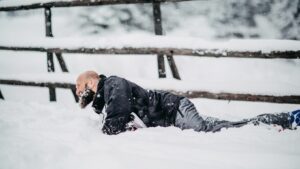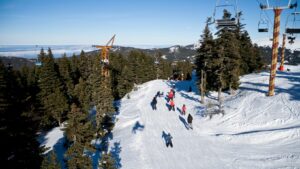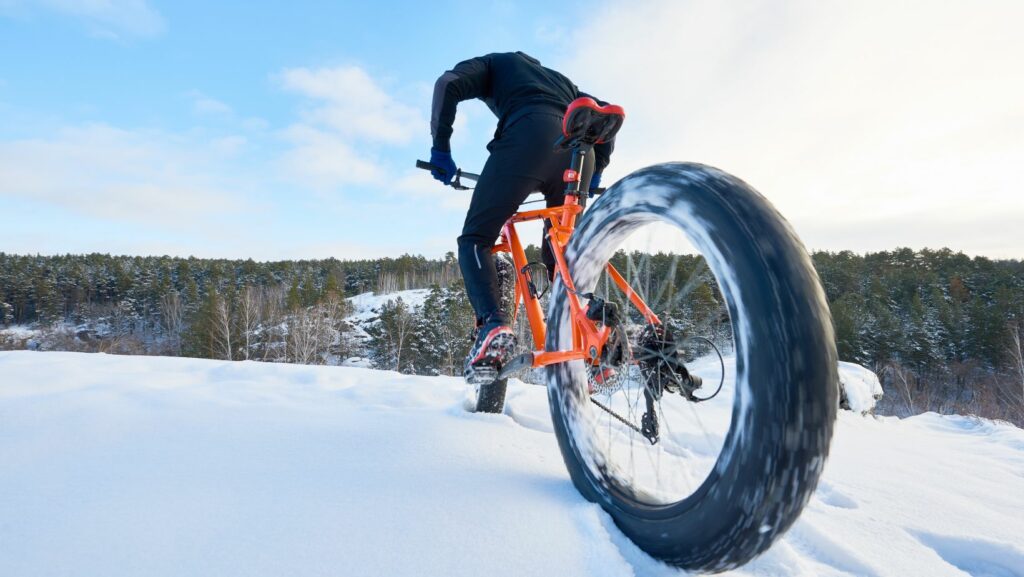The Winter Olympics, a thrilling spectacle of icy athleticism, captures the world’s attention every four years. This global event showcases a diverse array of sports, from the lightning-fast luge to the elegant ice dancing, each requiring a unique blend of skill, strength, and sheer bravery.
Understanding the wide range of sports involved can enhance your viewing experience, whether you’re a seasoned fan or new to the games. This article will guide you through the exciting list of Winter Olympics sports, shedding light on each one’s distinct characteristics and appeal.
So, strap on your virtual skis and get ready to dive into the frosty world of Winter Olympics sports. Let’s explore the thrilling competitions that make this event a frosty feast for sports enthusiasts worldwide.
Winter Olympics Sports List
 The Winter Olympics showcase remarkable athleticism across distinct Sports. From captivating ski jumps to spin-chilling ice hockey matches, it’s a stage where champions, draped in their country’s colors, etch their names in golden letters.
The Winter Olympics showcase remarkable athleticism across distinct Sports. From captivating ski jumps to spin-chilling ice hockey matches, it’s a stage where champions, draped in their country’s colors, etch their names in golden letters.
The Winter Olympics categorize sports into three segments: ice sports, alpine, skiing and snowboarding events, and Nordic events.
- Ice Sports: Ice sports, as the term implies, manifests competitions transpiring on the ice. Representative sports include figure skating, speed skating, and curling among others. For instance, ice hockey, a fast-paced team sport, grips audiences, while the complexity and grace of figure skating redefine the boundary between athleticism and artistry.
- Alpine, Skiing, and Snowboarding Events: This category sustains sports that form the downhill and gliding events. Sports in this category, such as alpine skiing, freestyle skiing, and snowboarding, feature athletes challenging steep slopes and displaying breathtaking stunts.
- Nordic Events: Nordic events comprise sports that enjoy roots in Nordic countries. Traditional sports, with cross-country skiing and ski jumping as examples, fall under this category. Notably, biathlon, a combination of skiing and rifle shooting, offers a unique viewing experience due to its mix of endurance and precision.
Evolution Through the Years
 The range of sports in the Winter Olympics have certainly evolved over the years. In the inaugural Winter Olympic Games in 1924, athletes competed in only six sports. The initial games saw sports like bobsleigh, curling, ice hockey, military patrol, skating, and skiing. Fast forward to the 2018 PyeongChang Winter Olympics, athletes participated in no fewer than fifteen sports, with additions like freestyle skiing, snowboarding, luge, and many more, reflecting a diverse evolution in the sporting roster. The continued addition of new and dynamic sports exemplifies the Olympic committee’s commitment to including a wider spectrum of winter sports, keeping the Games fresh, and offering a unique spectacle for audiences worldwide. The Winter Olympics continue to grow and evolve, setting the stage for increased diversity and competition in future games.
The range of sports in the Winter Olympics have certainly evolved over the years. In the inaugural Winter Olympic Games in 1924, athletes competed in only six sports. The initial games saw sports like bobsleigh, curling, ice hockey, military patrol, skating, and skiing. Fast forward to the 2018 PyeongChang Winter Olympics, athletes participated in no fewer than fifteen sports, with additions like freestyle skiing, snowboarding, luge, and many more, reflecting a diverse evolution in the sporting roster. The continued addition of new and dynamic sports exemplifies the Olympic committee’s commitment to including a wider spectrum of winter sports, keeping the Games fresh, and offering a unique spectacle for audiences worldwide. The Winter Olympics continue to grow and evolve, setting the stage for increased diversity and competition in future games.
Characterized by its intense speed, quick changes of direction, and strategic game play, Ice Hockey has always been a fan favorite. Originating from Canada, it’s earned a global following and is now part of the winter games schedule. Combining speed, agility, and strategic teamwork, the sport accentuates thrilling goals and high-intensity defense.
The Role of Technology in Winter Olympics Sports
 As the Winter Olympics evolved, technology’s influential role reflected in all aspects. From equipment enhancements to innovations in timing and scoring methods, the game’s advancement is impressive. This section will delve into the significant technological strides made in these areas, preserving the article’s earlier context of sport advancements and Winter Olympics’ ongoing evolution.
As the Winter Olympics evolved, technology’s influential role reflected in all aspects. From equipment enhancements to innovations in timing and scoring methods, the game’s advancement is impressive. This section will delve into the significant technological strides made in these areas, preserving the article’s earlier context of sport advancements and Winter Olympics’ ongoing evolution.
Advancements in technology strongly influence the Winter Olympics’ major athletic equipment. Foremost, the design and production of ski and snowboard gear have transformed significantly. For instance, carving skis, lighter and shorter than traditional ones, provide a grip on icy surfaces, improving athlete performance. Similarly, snowboarding gear has experienced significant enhancements, such as the addition of freestyle snowboards designed for more thrilling twists and turns.
Athletes’ apparel, crucial in the relentless winter conditions of the Olympics, is another area of innovation, with fabrics now optimized for thermal insulation and moisture-wicking. Examples include high-tech suits used in sports like speed skating, designed to minimize air resistance and provide the swift movement necessary for achieving top speeds.
